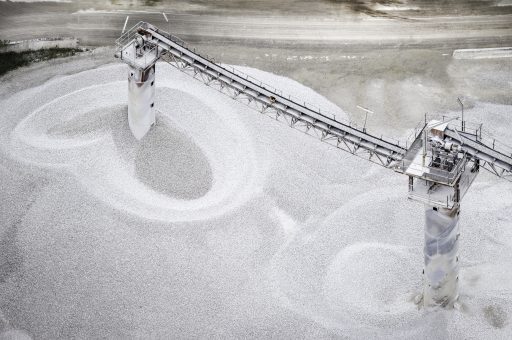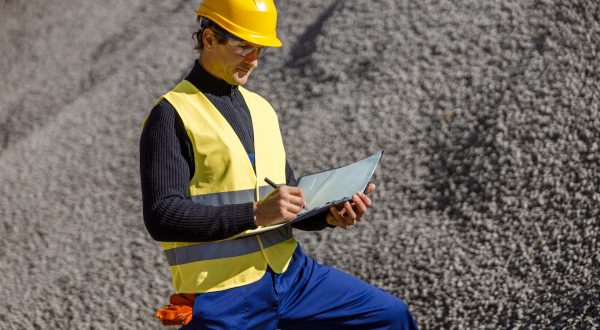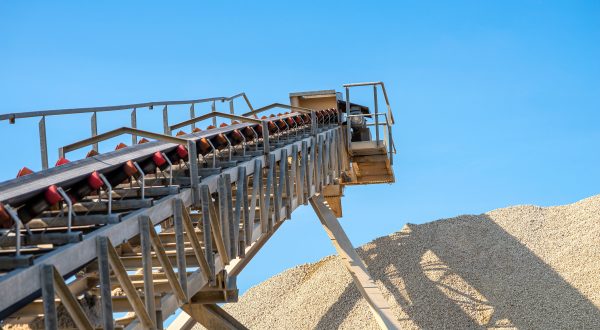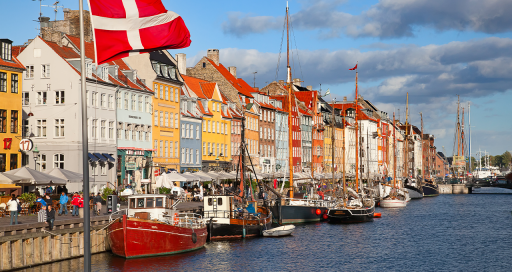Cement manufacturers are going all out for decarbonisation
Reading time: 6 min
The industrial cement and concrete sector alone accounts for 5 to 8% of worldwide greenhouse gas emissions. Despite being a key factor in the “Net Zero” trajectory, decarbonisation in this sector is still in its infancy.

With almost six billion cubic metres being produced annually, cement is the world’s second most-consumed resource after water. The industrial cement and concrete sector accounts for 5% to 8% of worldwide greenhouse gas (GHG) emissions. Production of cement, an ingredient in concrete obtained from a mix of limestone and clay, emits large quantities of greenhouse gases, since it involves heating the limestone and clay to 1,400 °C in a kiln to bring about a chemical reaction, which emits huge quantities of CO2, to form clinker, a key component of cement.
In addition to the GHGs already generated since the Industrial Revolution, cement and concrete production continues to increase, largely in response to demand from China and India. In fact, the International Energy Agency is forecasting an increase in global emissions directly linked to cement production in the order of 12% to 23% by 2050.
Decarbonisation in this sector is therefore crucial to the planet’s future, and also for an industry increasingly under attack from critics, and ecological organisations in particular. At a worldwide level, the sector has lofty ambitions: following a 20% reduction in its GHG emissions between 1990 and 2020, it is targeting a further 25% reduction between 2020 and 2030 on the way to achieving Net Zero by 2050, according to the Global Cement and Concrete Association.
In France, the sector is responsible for 2.4% of GHG emissions, and according to government figures, 21 of the country’s 50 most CO2-emitting industrial sites are cement factories. To accelerate their decarbonisation, cement manufacturers recently signed “transition contracts” with the government. The professional organisation France Ciment has in effect revised its decarbonisation roadmap from two years ago with far more ambitious targets: a 50% reduction in CO2 emissions (compared with 2015) by 2030. The new RE 2020 environmental regulation for new buildings, which came into force in 2022 with the aim of reducing the carbon footprint of all new construction, played no small part in this readjustment.
Iconic projects to launch the movement
“The levers in the decarbonisation roadmap are being implemented on various sites based on ecological transition contracts signed with the government,” explains Laure Hélard, Delegate-General of France Ciment. “Every one of these levers requires significant investment.”
Four iconic projects have been highlighted with the publication of this roadmap. The first concerns the installation by the Heidelberg Materials group of a new dry firing line with precalciner on its site in Airvault, in western France. In future, 88% of the site’s thermal consumption will draw on alternative fuels made from non-recyclable waste instead of fossil fuels such as coke or coal. The project will also reduce the proportion of clinker in cement and reduce the site’s carbon footprint by 27% compared with current production.
Working with Air Liquide on the K6 project, the EQIOM group is aiming to transform its factory in Lumbres, in northern France, into one of Europe’s first carbon-neutral cement plants by 2028. This project aims to capture and store almost 8 million tonnes of CO2 in its first 10 years in operation, through the implementation of innovative technologies.
“The roadmap levers for decarbonising the sector require significant investment.”
The third project, managed by the Lafarge group, involves a production line for activated clay, a new low-carbon additive that can reduce the carbon footprint of cement by 50%. This new facility at the cement plant in Saint Pierre la Cour, in northwestern France, has been designed to emit virtually no carbon. It recycles waste heat from the clinker kiln and burns only alternative non-fossil fuels, mostly biomass from local circular economy loops.
Fourth, the Vicat group’s Argilor project at its Xeuilley site in eastern France will equip the site to produce activated clays from clay sourced on site and using fuel predominantly made with waste from the surrounding area, decarbonising the operation by around 30%.
Activating levers and removing barriers
As seen with these projects, several levers must be activated to accelerate the sector’s decarbonisation, says Laure Hélard: “CO2 capture is a must, because two-thirds of the carbon emitted comes from limestone decarbonatation in the kiln as the clinker is produced. But at the same time, we must activate other levers: energy efficiency, fossil fuel replacement, and optimised construction. The circular economy will also play a role in decarbonisation, particularly with cements newly standardised under NF EN 197‑6, which incorporate recycled concrete fines and reuse waste and ash (industrial sludge, foundry sand, contaminated soil, etc.) in the clinker.”
There are still major barriers to decarbonisation to be removed, beginning with the huge investments required. Here, cement manufacturers are counting on the Carbon Border Adjustment Mechanism, which takes effect in 2026, and on government support frameworks. Laure Hélard concludes that “In terms of electricity consumption, which is set to double with carbon capture, these needs have to be anticipated, especially in terms of electrical connections. This is essential if this industrial transition to low-carbon is to succeed.”
KEY FIGURES
4.1 billion tonnes: annual worldwide cement production, of which China accounts for 52%, India 6.2% and the European Union 5.3%.
12 to 23%: predicted growth in worldwide cement production by 2050.
5 to 8%: the proportion of worldwide greenhouse gas emissions caused by cement production.
2.4%: the proportion of GHG emissions in France caused by cement production.
-19.2%: cement industry reduction in CO2 emissions per tonne of cement produced between 1990 and 2020.
-25%: worldwide emissions reduction target between 2020 and 2030.
-50%: 2030 emissions reduction target in France.
Sources: Global Cement and Concrete Association, The Shift Project, France Ciment.
07/10/2024



